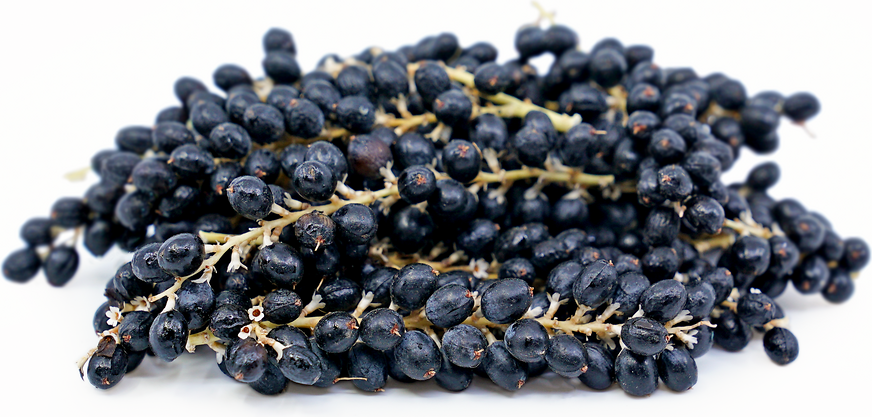


Fan Palm Fruit
Estimated Inventory, bskt : 0
Description/Taste
Fan Palm fruits are 1 to 1.5 centimeters in diameter and grow by the hundreds on branched inflorescences, or flower clusters. Each cluster of fruits can weigh up to 20 pounds with most trees producing an average of 12 clusters. The small bluish-black fruits are covered in a sap, giving them a greyish bloom. A thin layer of pulp conceals a large seed nearly the same size as the fruit. Fan Palm fruits have a slightly dry, chewy texture, sweet taste and flavors of molasses and butterscotch.
Seasons/Availability
Fan Palm fruit is available in the early spring through the fall months.
Current Facts
Fan Palm fruit are the berries, or drupes, of the tallest palm trees in the world, some reaching up to 30 meters tall. The desert palms have fronds that resemble large fans. The fruit comes from two different but related species of palm, the Washingtonia robusta, native to Mexico, and the Washingtonia filifera, the only palm species native to California. They are prolific in Southern California and often grow in clusters around natural waterways, creating oases in the desert and inspiring the names of towns like Palm Springs and Thousand Palms.
Nutritional Value
Fan Palm fruits are rich in carbohydrates, fiber, and vitamin A, and is a source of calcium and protein.
Applications
Fan Palm fruits can be eaten fresh or used in their dried form. Fresh fruits can be eaten as is or boiled to make wine or syrup. The syrup can be used as a natural sweetener in place of sugar or honey in recipes. The fruits can be dehydrated or dried to separate the pulp from the seed. Add fresh or dried Fan Palm fruit pulp to smoothies or bake into breads, muffins or scones. Store Fan Palm fruit in the refrigerator for up to a week. Dried fruits will keep in an airtight container for up to six months.
Ethnic/Cultural Info
Fan Palm fruit was harvested and used by the Cahuilla and Cocopah Indians of Southern California, who referred to the berries as “maul”. To get the fruit they used ropes to lasso and pull the fruit down from the tops of the trees or used long willow poles notched at the top to hook the main fruit stems. They soaked whole fruits to make a sweet beverage or separated the thin flesh from the seeds to make jelly. The seeds were roasted and ground to make flour or a mush.
Geography/History
Fan Palm trees W. robusta and W. filifera are native to Mexico’s Sonoran Desert and southern Baja California and the inland desert region of Southern California, southwestern Arizona, and northern Baja respectively. The California Fan Palm is shorter and more cold-hardy than its taller Mexican relative, which is more suited to moister, coastal climates. Both species are heavy producers and tend to overgrow easily in the right conditions. The fruits of the Fan Palm trees have been gathered and used for centuries by native peoples in the regions where they grow. Today, the trees are most often planted for ornamental or hedging purposes and the fruits enjoyed by wild birds and animals. In the latter part of the 2010s, the fruits became popular with foragers and natural food enthusiasts. Fan Palm fruit may be spotted at farmer’s markets in Southern California.
Recipe Ideas
Recipes that include Fan Palm Fruit. One
| Canning Granny |
|
Palm Fruit Jelly |
| Savor the Southwest |
|
Solar Fan Palm Syrup |




